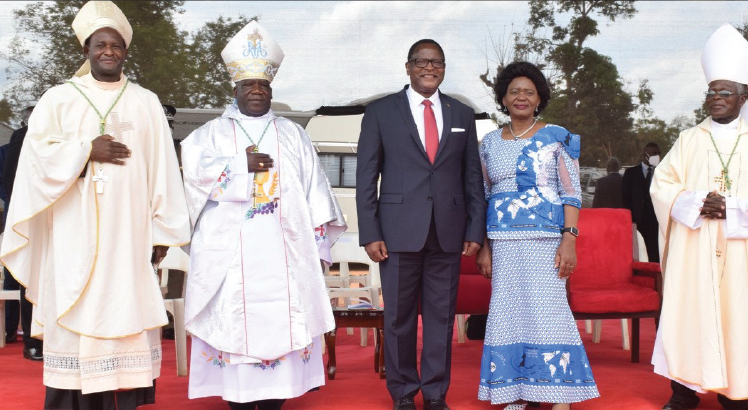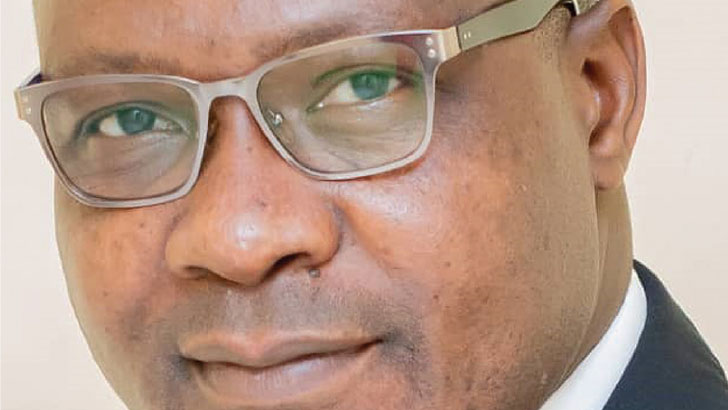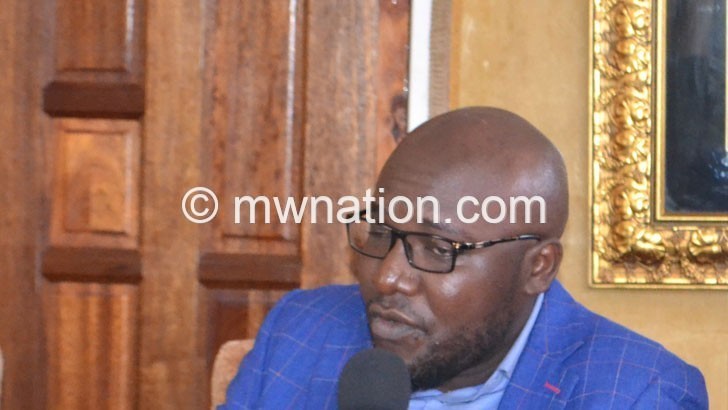REGIONAL INTEGRATION ANCHORS NSANJE PORT DREAM
In 2006, a dream to connect Malawi to the world was hatched with pomp, excitement, anticipation and hope that it will come to reality, but sadly, the vision still remains a pipedream.
It remains certain that without an operational Nsanje World Inland Port, Malawi remains a landlocked country, which means the cost of imports and exports are high.

Transport experts argue that more than 40 percent of the costs of imported goods in Malawi is taken up by transportation costs—one of the highest in the sub-Saharan Africa—resulting in goods being expensive on the local market. The outside world too, argue the experts, suffer the pains of relying on Malawi’s agricultural exports as they have to pay the costs of transport between production sites to the nearby ports.
“The opening of Nsanje World Inland Port is expected to reduce transport costs on imports and exports,” reads in part a 2011 study by the Malawi Lake Basin Programme on cross-border trade, adding that the country will save a total of $173 million (K26 billion) in annual imports.
It is this understanding that makes one wonder why the realisation of the dream should be delayed. Even the Southern Africa Development Community (Sadc) and others have wished the dream well.
“I have spoken to several heads of States within Sadc on the progress of the Nsanje World Inland Port and I am happy they are supporting the project. The African Union, European Union and the World Bank have also expressed their interest to support the construction of the port which will cut by at least 60 percent of the costs of importing goods,” said President Peter Mutharika at the end of the 34th Sadc Summit in Victoria Falls, Zimbabwe last year.
But what impedes the port dream?
It all began in October 2010 when it proved that construction of the port alone was not enough to unbolt the country from being landlocked. The port was inaugurated in an embarrassing style—the badge that was expected to glitter the inauguration ceremony was withheld along the Zambezi waterway by Mozambique authorities.
Maputo is quoted in the international media arguing that the port was opened before a feasibility study and it insists that it cannot allow the port to operate before the feasibility study because it brings environmental implications which need to be checked first.
“You do not send ships along the territorial waters of another country without having very clear norms which indicate exactly what procedures must be followed. We are open and we are going to work on the matter,” former Mozambique president Armando Guebuza said at a bilateral economic summit between Mozambique and South Africa in November 2010.
Paradoxically, this was after a coal mining company had done an environmental and social impact assessment of the navigability of the Zambezi River. In contrast, Mozambique was quoted in The Nation of July 2012 arguing that the report was “inconclusive and does not answer important questions for the mitigation of adverse effects.”

This sounded a final nail on the dream and Malawi’s hope to connect to the globe. Like other landlocked countries, Malawi’s performance on goal number eight of the Millennium Development Goals (MDGs), which is global partnership argues Chad Bray, a journalist and researcher in his article titled Dream Fades for Inland Port Project published in 2012, can be high if Malawi improves its connectivity to the outside world through transport. He observes that it is water transport through the Nsanje world inland port that has the greatest potential of easing transport and costs of commodities sent or received through the port.
But the dream can come into fruition, thanks to intervention of regional integration being spearheaded by Sadc. Its intervention to lead another feasibility study, this time engaging the three concerned nations—Malawi, Mozambique and Zambia, brings a new hope to the dream. In July 2012, Malawi shortlisted six consultants to do the feasibility study.
“The feasibility study is completed and Sadc, the main implementing partner, will meet soon to give a report,” said Mutharika last month upon arrival from USA.
All eyes are now on what the feasibility study has got. Positive results will definitely open doors for African Growth and Opportunity Act (Agoa), Civil Society Network and Foundation for Democracy in Africa to support the initiative as the two assured Mutharika recently of their support to the realisation of the dream—hatched by the late Bingu Wa Mutharika.
Indisputably, Malawi needs the port as it chains regional integration mission being promoted by regional blocks through transport and travel. It is reported that if commissioned, the port will help Malawi, Zambia and Botswana, among other nearby countries, in transporting their goods at cheap costs than is the case now. If it materialises, the port will connect Malawi to the Indian Ocean through Chinde, a distance of only 240 kilometres, thereby cutting the costs of imports and exports by 40 percent. The current shortest route is the Nacala railway and is 700 kilometres.
However, apart from the direction taken by Sadc, notes Robert Mzimu, a researcher and expert in international relations, Malawi should add an extra gear in engaging the two countries to support the idea.
“If you can see, Malawi is behaving as if all will materialise with Sadc, but the issue is if the report produces unattractive results, it will not work. I was expecting to see Malawi engaging more the neighbouring countries. This is the weakness I have seen in this government, it relaxes too much on issues of urgency,” says Mzimu.
He adds that another slipping opportunity is that Mozambique and Malawi have new administrations and says Malawi should take advantage of the development to plant a new international relationship with Mozambique that can help to influence Maputo to change tune on navigation and support the idea.
Common Market for Eastern and Southern Africa (Comesa) and Sadc have protocols on regional integration. Comesa advocates to have an integrated region of 19 countries doing business as a nation where any businessperson can travel, live, invest and do business anywhere without hindrances. The latter, through the Sadc Protocol on Transport, Communication and Meteorology of 1996, under Chapter VIII promotes regional integration by allowing easy travel between national boarders be it on road, air rail or water for people in the region.
The Sadc Protocol on Trade (2005), as amended also envisages the establishment of a Free Trade Area in the Sadc region and its objectives are to further liberalise intra-regional trade in goods and services. Supporting the Nsanje Port is the Tripartite Vision, also in the protocol, which aims to improve the economic and social welfare of the citizens of the Comesa-EAC-Sadc region, through the promotion of regional economic growth by creating an enabling environment for regional trade.
This, says Mzimu, gives hope that one day the dream will come to reality. He says there are no enough reasons to stop the dream, but insists creating a better relationship with Mozambique and Zambia now would be the way to go than waiting to meet after the report.
“Africa is working towards a time when the continent will live like one with easy access to any places. Transport is the key component. So any setbacks will not live long because even Mozambique will benefit. My observation is that Malawi hurried in inaugurating the port before properly engaging Mozambique, but we should all live to believe this will materialise, eventually. If it doesn’t, then AU and Sadc will fail us,” says Mzimu.
He points out that environmental impacts coming with the waterway can be managed if proper conditions are set, adding several countries use their water bodies for navigation and the damage is being managed.
Rex Mbewe, a lecturer in the department of environmental management at the University of Malawi—The Polytechnic, says the future of the port rests in the Sadc report saying it will show whether navigation along Zambezi waterway has minor or significant impacts.
“The key factor is the environmental impacts. If it has minor then soon it can be commissioned, but if they are significant, then several steps have to follow. The common issue in environmental impact on navigation is life of aquatic animals in-terms of noise. Water displacement and noise among others,” says Mbewe.





